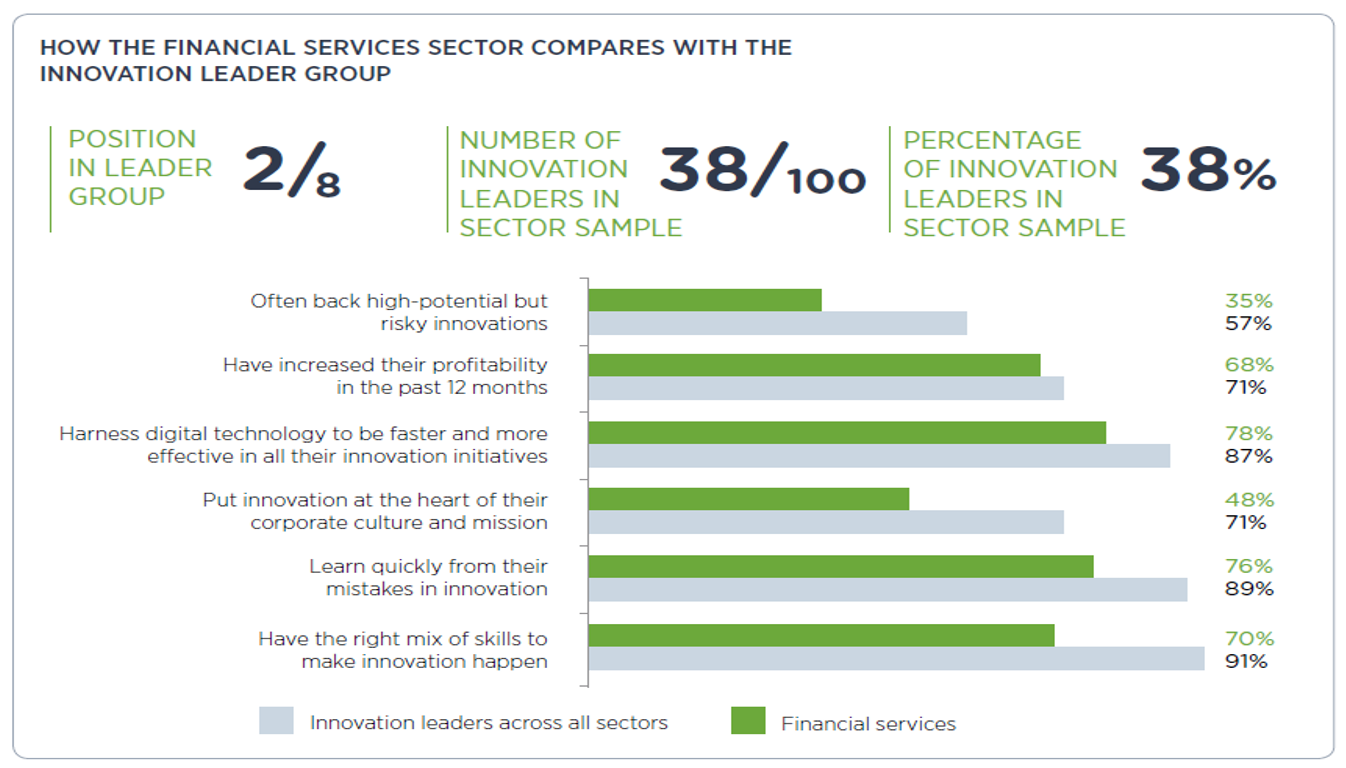A new report by PA Consulting finds fear of failure one the big reasons that companies aren’t more successful.
There is some indication that innovation is related to better business results. Of the group of “innovation leaders” (identified as those who strongly believe their leadership is good at encouraging and nurturing innovation), the study found that “35% had delivered over 10% EBITDA growth in the last year, compared to just 16% of the rest of the private sector respondents.”
That’s good, but then there’s a pesky 65% of the lead group that didn’t see such performance differences.
In any case, the study’s goal was to find the key traits associated with the most outstanding innovators. The results are food for thought for C-suite executives that wish to be more innovative while avoiding costly failures — a situation reported by nearly half (47%) of the respondents. A full 50% also said they had seen a brilliant idea fail for avoidable reasons.
Peter Siggins, business design expert at PA Consulting Group, told me culture was the main culprit. If leadership is risk adverse (sometimes for good reason, other times because there is not enough upside for them personally), then people aren’t encouraged to take risks.
Another factor is the lack of reward mechanisms to encourage innovation, and sometimes the opposite — punishment to risk takers — that combine to stifle innovation. Siggins suggests “rewarding the right behavior irrespective of the outcome,” rather than just on success. Because innovation is all about taking risks, but doing so in a way that doesn’t break the bank when some efforts inevitably fail.
The 100-page report breaks down innovation by industry sector, finding that life sciences has the highest percentage of innovation leaders. I was mildly surprised that Technology scored in the middle of the pack.

Let’s take a look at the No. 2 industry, Financial Services, which scored at exactly the average: 38% of companies categorized as innovation leaders. Analysis in the report notes that a compliance culture and legacy systems can undermine innovation efforts.

There also a section of the report segmenting data by country, where you’ll find the top 5 countries are Mexico, Sweden, US (at the industry average of 38%), Norway, and Germany. The United Kingdom was ranked lower, with just 23% of respondents in the leader group. UK respondent like to talk about innovation, but are held back by lack of focus (what is innovation, anyway?) and concern about achieving an ROI.
 The report has some interesting examples, like the Ora towel, a new design that stores twice as many towels as traditional paper towels, and can be used with just one hand. Developed by a British firm Better All Round with the help of PA Consulting, it was taken from design to Tesco shelves in less than 12 months.
The report has some interesting examples, like the Ora towel, a new design that stores twice as many towels as traditional paper towels, and can be used with just one hand. Developed by a British firm Better All Round with the help of PA Consulting, it was taken from design to Tesco shelves in less than 12 months.
The report’s recommendations to “convert innovation investment into profitable return”:
- Be visionary, aggressive and bold with innovation
- Bring new life to the traditional board
- Bring in antibodies to fight off standard innovation killers
- Measure by value
- Fail safe, fail frugal
- Go beyond ‘token digital’
- Look beyond your sector – and then keep going
This report may help raise awareness of the importance of innovation and how to mitigate some of the challenges. Otherwise, more firms could find themselves in the same position as taxi drivers. They assumed they had a nice secure business, yet a tech innovator (Uber) figured out a way to turn ordinary people into taxi competitors, while delivering a better end-to-end customer experience.
Thanks to PA Consulting for providing me a copy of the report for review. The full report is available for download here (free registration required).




This is really informative, and it brings to mind the story of W.L.Gore and Associates, the company which invented GoreTex material for an array of applications. Bill Gore, who was a research chemist at duPont as well as an avid outdoorsman, left to form his own company in part because he wanted to set up a culture that is appreciative. A good way to understand how this word helps to define enterprise innovation is that, to quote (myself) from “The Customer Loyalty Pyramid” (1997), it is ‘an expressive inquiry that envisions possibilities, capitalizing on those things the company does well.’
Several of the things that W.L.Gore has always done well, for instance, are one-on-one mentoring, active internal group networking, cross-functional training, and employee teamwork. This approach to learning and creativity, they’ve found, builds conceptual and task capability, while also developing the interpersonal and interactive skills so important for group and individual innovation.
Tom Peters has also looked at what makes an organization good at learning and innovation. He developed a concept called ‘knowledge management structure’, or KMS for short. Again, quoting from “The Customer Loyalty Pyramid”: ‘KMS creates and identifies internal experts; uses their knowledge, packages, systematizes, and distributes the information they and others create; and supports the network structure and culture required to keep it flowing through teamwork, training, and purposeful cross-group sharing.’
As you’ve covered in the review of PA Consulting’s study findings, most companies, fearing failure, have moved away from this kind of culture.